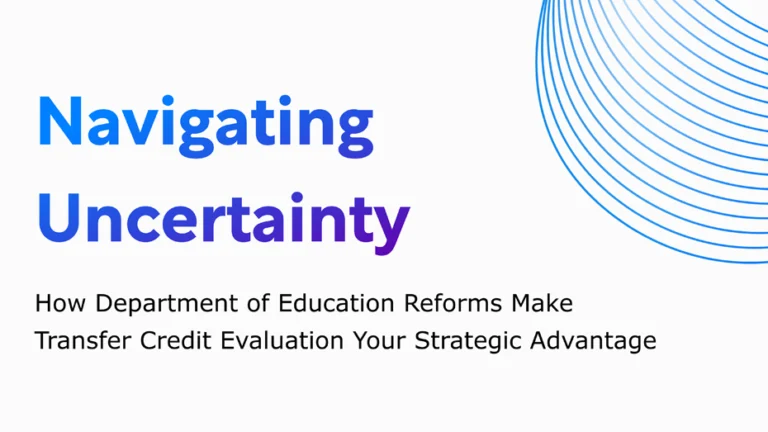Digital experiences are the new standard that demands better from every industry — especially banking. While banks take the opportunity to digitally revamp their front-end onboarding journey, some incumbents remain too complex beneath the surface to keep customers happy.
Banks, digital and otherwise, are driving the successful onboarding of new commercial customers with cleaner end-to-end workflows. Let’s unpack your path to cut the friction and expedite action across all customer and staff touchpoints.
Why banks lose commercial customers during onboarding
To unravel the processes that undermine your improvements to customer experiences, you’ll first want to first unpack their dissatisfaction.
During onboarding, commercial customers expect a simple journey where they feel heard and understood. Yet, many traditional banks are challenged by dated back-end processes that work against these goals.
Consider how your customers are navigating your onboarding experience:
- Are you requiring mandatory in-branch visits to initiate a new account opening? Often, modern commercial customers expect options to start doing business with you at their convenience — whether digitally or in-person.
- Are your departments pushing redundant requests to collect information? Customers are naturally turned off by taking time from their busy schedules to repeat themselves with the information they’ve already provided to your bank elsewhere.
- Are you cross-selling before you know your customers? Each customer is more than just a persona. If you’re promoting ill-fitting offers, you’re delivering an impersonal experience that falls behind your digital-first competitors.
At their foundation, these are operations issues rather than surface-level problems with customer interactions. By unpacking why your process issues, you can begin to fundamentally rethink how your teams operate.
Core operations challenges in onboarding
Customers often endure symptoms of the challenges your teams face behind the scenes. From front-office to the back-office, it’s common that traditional institutions struggle with issues like:
- Siloed departments that share information via fax, email PDFs, and shuttling paper between offices. Ultimately, these delays stretch account opening times into a week or more — if a customer chooses to stay in the process that long.
- Manual information collection via paper forms that a customer must fill out, scan or fax, then be rekeyed digitally by staff — across multiple departments.
- Non-standard workflows that cause discrepancies across international branches and departments.
- Too many overlapping applications that confuse and overwhelm customers when your digital competition offers streamlined single-application options.
Process redesign eliminates these inefficiencies to offer fast, personalized experiences — while protecting your organization from complex compliance challenges.
Laying the foundation with new systems
As you reassess and restructure, your priority should be to learn and share more information on each customer with less effort.
Successful onboarding can serve as a feedback loop of sorts. To kickstart this loop, key aspects should be simplified, transparent, and efficient organization-wide.
- Collect customer onboarding data sooner,
- Store and access gathered data immediately,
- Analyze and report customer insights clearly,
- Personalize offerings and customer interactions.
On intake, early information gathered helps you know your customer in-depth.
As each department dissects this information for their own goals, these insights can be passed along for better personalization.
Customers responding to these changes fuel the fine-tuning of your information for a more relevant service experience, not just for your current prospects, but for existing and future customers as well.
9 Areas to focus on when revamping commercial banking onboarding
Successful banks are finding some key approaches helpful when leveraging emerging technologies like low-code automation and machine learning.
1. Expand your application access
Simpler applications start with more remote banking options. Omni-channel online applications give your customers flexibility to provide info on their schedule, from any location and device they’d like.
2. Streamline your intake of applications and documents
Physical paperwork and re-keying digital info are dated and holding your organization back. By feeding customer data directly into your back-end systems, today’s technologies can eliminate your error-prone manual data entry.
While your online customers use an integrated web form, in-branch customers can have their scanned documents machine-read and auto-populated via Optical Character Recognition (OCR).
Allow your customers to feed any supporting documents via an encrypted online portal to further leverage OCR.
3. Consolidate your applications
You can also consolidate overlapping applications into a single, modular web form that expands as needed via one-click service addons. Customers endure fewer separate documents to complete, while you slim down the paperwork and the data redundancies.
4. Centralize customer data storage
Each international department and business unit — be it Anti-Money Laundering (AML) or credit checks — has its own goals. Much of the information they need can be gathered early and reused if they have a central place to house it.
A central document management system can help you break down department silos. By making information readily available to the whole organization, neither customers nor employees lose time to document resubmissions. Audit readiness also gets baked into organizations that collect, centralize, and structure information as it arrives.
5. Integrate your data storage with platforms
To mobilize this de-siloed data, your departments need access to data across all your workflow systems. From core banking and payments tools to identity verification and compliance, your central platform should easily connect storage to relevant solutions. Even collaborative tools like Slack should be in the loop when new data arrives and the next steps are needed.
6. Automate flow of data into and across workflows
Typically, customer data requires many intermediary handoffs and checkpoints on its journey from initial intake to mobilizing in your workflow. Expedite end-to-end to process data straight-through when possible via automation.
Going beyond automated application and documentation data gathering, your teams can automate approvals and follow-ups as needed. Instead of slowing down due to delayed process updates, auto-notifications can keep all your onboarding teams coordinated.
7. Monitor all activity progress
Visible events along the onboarding timeline make for faster progress. Dashboards bring all requests and tasks in one space to attribute accountability and encourage proactive efforts. As a department employee or customer completes a task, all other stakeholders immediately have the resources to make better decisions for the whole pipeline.
8. Standardize workflows
For better systems to foster consistency, each local branch must work just like the others. Fortunately, banks working across countries can operate under a global standard while varying their operations for local compliance. Customers begin to have consistent expectations when their experiences match.
9. Personalize with AI-based analytics
With onboarding data comes a wealth of insights that modern technology can repurpose for the customer journey. For instance, machine learning (ML) now allows teams to quickly field tons of unstructured data — i.e. documents, image scans, etc. — for trends and behaviors not previously visible.
In other words, ML helps banks know their customers much faster than human eyes alone. Assessing risk, checking document authenticity, and even offer personalization become radically fine-tuned as more data is processed. By demonstrating an intimate understanding of their unique needs, you’re offering value that can carry long into the customer’s lifecycle.
Building better onboarding with ProcessMaker
In summary, you’ll need to dig past surface touchpoints and refine your end-to-end processes for a truly digital-ready onboarding flow.
By refining your commercial account opening process, you’re likely to introduce tech to make workflows:
- Automated,
- Expedited,
- User friendly, and
- Easy to integrate with existing systems.
Ultimately, your central platform should carry the torch to facilitate upgrades in onboarding and beyond. Learn more about what to expect from your modernized process solutions here.





